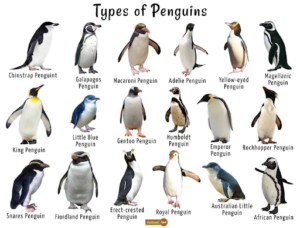In news– Recently, Mumbai’s Byculla Zoo announced the addition of two new Humboldt penguin chicks.
About Humboldt penguins-
- Humboldt penguin, (Spheniscus humboldti), also called Peruvian penguin, is a species of penguin (order Sphenisciformes).
- Penguins are divided into six genera and the Humboldt penguin (Spheniscus humboldti) belongs to a genus that is commonly known as the ‘banded’ group.
- They are so named because their habitat is located near the Humboldt Current, a large oceanic upwelling characterised by cold waters.
- The geographic range of the species is limited to the coasts of Peru and Chile and nearby Pacific islands.
- They have large, bare skin patches around their eyes, an adaptation to help keep them cool.
- It is characterized by the presence of a broad C-shaped band of white feathers on the head, a wide band of black feathers that runs down the sides of the body and a large pink fleshy region on the face.
- Their breeding season in the wild is either March-April or September-October depending on the location of the colony.
- They primarily feed on anchovies, pilchards (sardines), and herring and also consume crustaceans and cephalopods.
- This penguin’s lifespan is about 20 years.
- The Humboldt is one of the most popular zoo penguins due to its ability to withstand warmer climates.
- IUCN status- Vulnerable

Difference between Humboldt penguins & other Penguins-
- The largest, the Emperor penguin, stands at over 4 ft tall while the Little penguin has a maximum height of 1 ft.
- Humboldt penguins have an average height of just over 2 ft.
Mumbai’s Byculla Zoo-
- Veermata Jijabai Bhonsale Udyan, also known as the Byculla Zoo and formerly Victoria Gardens, is a zoo and garden covering 50 acres located at Byculla, in the heart of Mumbai, India.
- It is the oldest public garden in Mumbai.
- After Indian independence it was named after Jijamata, the mother of Shivaji , the first Maratha emperor.
















